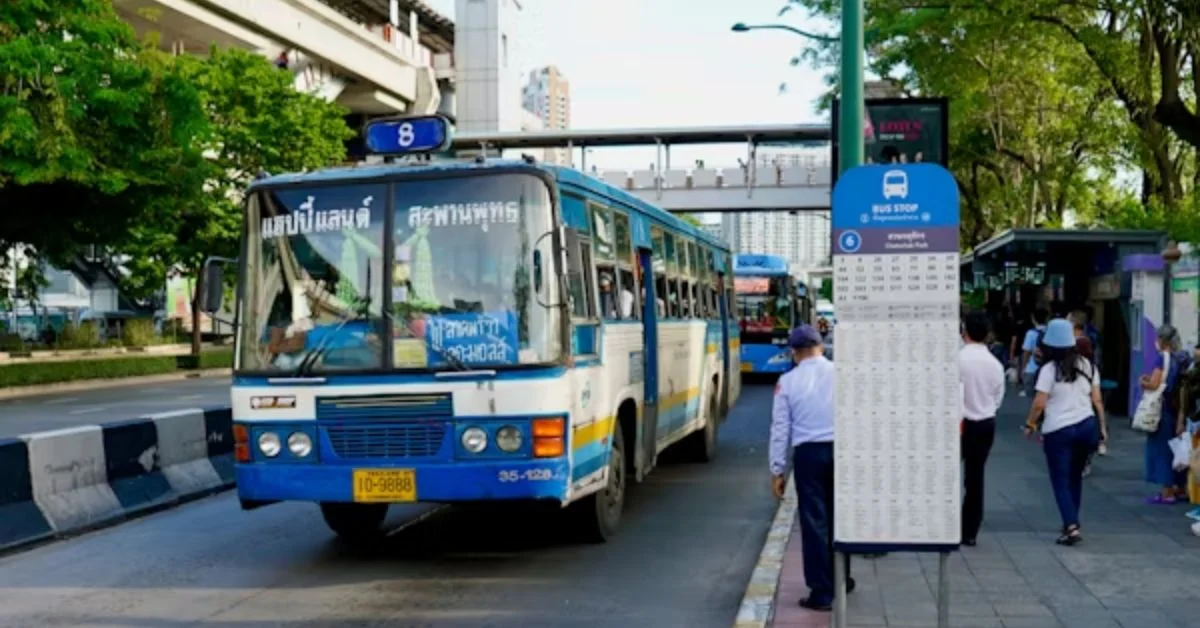Vinayagapuram Bus Stand is more than just a local transport junction in North Chennai—it is a lifeline for thousands of daily commuters. Located in the rapidly urbanizing Vinayagapuram neighborhood, this modest but vital bus stand serves as a critical node for both residents and interconnecting suburbs, linking educational institutions, industrial areas, markets, and residential zones with Chennai’s larger metropolitan transport grid.
At first glance, the bus stand may seem utilitarian—just another functional corner of the city’s wide-ranging Metropolitan Transport Corporation (MTC) network. But for those who depend on it, from factory workers and college students to elderly residents and market vendors, Vinayagapuram Bus Stand represents access, mobility, and opportunity.
In this comprehensive article, we explore the purpose, usage patterns, socio-economic impact, facilities, challenges, and future potential of Vinayagapuram Bus Stand—bringing clarity and detailed information to those who rely on it or want to understand its importance within the city’s evolving transport landscape.
Where Is Vinayagapuram Bus Stand Located?
Vinayagapuram is situated in the northern part of Chennai, within the jurisdiction of the Greater Chennai Corporation. The bus stand is located near the Vinayagapuram Main Road, which connects to key roads like Ambattur–Red Hills Road and Retteri Junction, providing good access to other northern suburbs such as Kolathur, Puzhal, and Perambur.
It serves as both an origin and transit stop for several Metropolitan Transport Corporation (MTC) bus routes, making it integral to daily movement in this part of the city.
The Functional Role of the Vinayagapuram Bus Stand
Unlike major intercity terminals such as CMBT (Chennai Mofussil Bus Terminus), Vinayagapuram Bus Stand caters primarily to intra-city travel, facilitating movement to nearby towns, key urban locations, and transport hubs.
Key Functional Roles:
- Feeder point for Retteri, Kolathur, Villivakkam, and Ambattur
- Terminal stop for short-distance MTC buses
- Transit hub for school and college students from local areas
- Accessibility for local residents, small traders, and daily wage workers
It also helps decentralize traffic from larger nodes like CMBT or Perambur, easing congestion and improving last-mile connectivity in North Chennai.
Popular MTC Bus Routes from Vinayagapuram
A number of Metropolitan Transport Corporation (MTC) buses originate, stop, or terminate at Vinayagapuram. These are some of the most frequently used routes:
| Bus No. | Route | Destination | Frequency |
|---|---|---|---|
| 41D | Vinayagapuram to Broadway | Central Chennai | High |
| 27G | Vinayagapuram to Anna Square | Beach Area | Moderate |
| 147 | Vinayagapuram to Avadi | Western Suburb | Low |
| M51 | Vinayagapuram to Tambaram | Southern Chennai | Moderate |
| 70A | Vinayagapuram to Ambattur OT | Industrial Hub | High |
| 41H | Vinayagapuram to High Court | Government Offices | High |
These routes offer connectivity to employment hubs, educational districts, and healthcare centers across the city.
Commuter Profile: Who Uses Vinayagapuram Bus Stand?
The daily life at Vinayagapuram Bus Stand reflects the demographics of the neighborhood—middle-class families, lower-income workers, students, and elderly residents.
Common Commuter Types:
- School and college students attending institutions in Anna Nagar, Villivakkam, or Kilpauk
- Factory workers traveling to Ambattur, Red Hills, or Ennore
- Vendors and small traders accessing wholesale markets in Koyambedu or George Town
- Women commuters heading to service-sector jobs in T. Nagar or Parrys
- Senior citizens using buses to reach government hospitals or religious centers
On average, thousands of commuters pass through the stand daily, especially during early mornings and late evenings.
Facilities at Vinayagapuram Bus Stand
While the stand does not boast state-of-the-art infrastructure, it offers essential amenities for daily commuters. These include:
1. Passenger Shelters
Basic covered shelters with seating are available, though they can be overcrowded during peak hours.
2. Route Maps & Timetables
Several boards display route numbers and schedules, but digital boards are absent.
3. Ticket Booths
MTC ticketing booths are present, along with conductors who issue tickets on-board.
4. Vendor Kiosks
Small shops sell snacks, tea, water, and newspapers. Local fruit vendors and mobile recharge stalls are also common.
5. Toilets and Sanitation
Public toilets are available but limited in number and not always well-maintained.
6. Lighting and Security
Streetlights are functional, but dedicated security personnel are absent, especially during late-night hours.
Though modest, these features make the bus stand functional and reliable, especially for the working-class population.
Challenges Faced by Commuters
Despite its vital role, Vinayagapuram Bus Stand faces multiple operational and infrastructural challenges that need urgent attention.
1. Lack of Real-Time Updates
There are no digital boards or apps offering real-time tracking, leading to unpredictable wait times.
2. Overcrowding
Peak-hour congestion leads to long queues, particularly for buses bound for central business districts.
3. Limited Accessibility Features
There are no dedicated facilities for the differently-abled or elderly beyond basic ramps.
4. Poor Maintenance
The shelters, toilets, and seating are often in a state of disrepair. Sanitation is inconsistent.
5. Traffic Congestion
Encroachment by autos and vendors adds to traffic chaos around the stand during rush hours.
Socio-Economic Impact on the Neighborhood
Vinayagapuram Bus Stand has had a direct influence on the urban development of the surrounding area. Here’s how:
Real Estate Growth
Property prices have steadily risen due to improved connectivity, making the area attractive for first-time homebuyers.
Retail Expansion
More grocery stores, clinics, tuition centers, and mobile stores have cropped up to cater to the commuting crowd.
Employment Link
Residents are able to access jobs in manufacturing zones and IT corridors thanks to affordable bus travel.
Educational Reach
Students from low-income families rely on the bus stand to travel to colleges in areas like Nungambakkam or Kilpauk.
Future Development and Urban Integration
With Chennai expanding northward, there are plans and discussions for upgrading minor bus stands like Vinayagapuram as part of the CMDA’s (Chennai Metropolitan Development Authority) transit improvement projects.
Proposed Upgrades (under review or initial planning):
- Modernized waiting areas with LED displays and digital route updates
- Integration with share-autos and e-rickshaws for last-mile connectivity
- Solar lighting and CCTV surveillance for safety and sustainability
- Dedicated vending zones to reduce street congestion
- Smart card payment systems integrated with MTC buses
If implemented, these steps would not only improve the daily experience for users but also make Vinayagapuram a model neighborhood node in decentralized urban planning.
Local Sentiments and Community Ties
Residents around Vinayagapuram view the bus stand not just as a transit stop but as a symbol of connection and continuity.
“It’s where we meet neighbors, where children wait with parents, where every face becomes familiar,” says Mrs. Lakshmi, a 64-year-old resident.
“My son used this bus stand to go to school. Now, he takes the same bus to work.”
These emotional narratives underline why bus stands in India are more than infrastructure—they are embedded in daily rhythms of community life.
Conclusion
Vinayagapuram Bus Stand is not just a minor transport hub; it is a vital cog in the wheel of Chennai’s local life. From its daily routes and modest infrastructure to its economic influence and emotional significance, it exemplifies how even small public utilities can create big social impacts.
As cities continue to modernize, it’s crucial that urban planners recognize and invest in neighborhood transit nodes like Vinayagapuram. With proper upgrades, digital integration, and inclusive facilities, this bus stand can be transformed into a model for accessible, sustainable, and people-centered urban transport.
For now, it stands as a testament to what works—and what can be made better—when communities and connectivity meet on common ground.
FAQs
1. Where is Vinayagapuram Bus Stand located?
Vinayagapuram Bus Stand is located in North Chennai, near Retteri Junction. It serves areas like Kolathur, Ambattur, and Puzhal.
2. Which are the most common bus routes from Vinayagapuram?
Popular routes include 41D (to Broadway), 147 (to Avadi), and 70A (to Ambattur), connecting residential and commercial areas.
3. Is the bus stand accessible to differently-abled individuals?
Currently, accessibility is limited. There are basic ramps, but no specialized infrastructure for the differently-abled.
4. Are there facilities like toilets and shelters at the bus stand?
Yes, there are shelters and public toilets, but their maintenance quality varies. Improvements are needed in hygiene and upkeep.
5. Are there any development plans for Vinayagapuram Bus Stand?
Yes, future plans under CMDA proposals include digital integration, lighting upgrades, safety measures, and vendor space organization.
For more information, click here.









